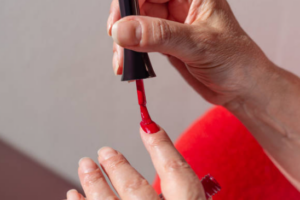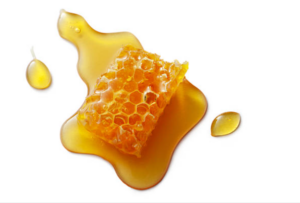The Untold Story

In the enchanting world of beauty, where colors converge and textures captivate, our makeup bags hold the secrets to our unique expressions of self. In the pursuit of enhancing our features, we meticulously curate a collection of cosmetics that complement our styles and align with our values. As conscious consumers, we strive to make cruelty-free and vegan choices, but within the intricate tapestry of ingredient lists, there lie hidden animal-derived elements that often escape our scrutiny.
Beyond the allure of the packaging and the promises of flawless finishes, it’s time to delve into the nitty-gritty of cosmetic formulations. This blog post serves as a guiding light through the labyrinth of ingredient names, unveiling the clandestine presence of animal byproducts in your makeup bag. Let’s embark on a journey to uncover these often-overlooked elements, empowering you to make informed choices that align with your ethical beauty principles.
1. Carmine: The Covert Red Pigment
Carmine, often camouflaged behind the INCI names “C.I. 75470” or “cochineal extract,” is a red pigment with a covert origin. This vibrant hue, commonly found in lipsticks, blushes, and eyeshadows, is derived from the crushing of female cochineal insects. These tiny insects, native to South America and Mexico, produce carminic acid as a defense mechanism against predators. The extraction of this acid results in carmine, a widely used colorant in the cosmetic industry.
While carmine has been a staple in cosmetic formulations for its rich red tones, its animal origin raises ethical concerns for many consumers. For those seeking alternatives, the beauty market now offers a variety of plant-based and mineral-derived pigments that replicate the striking reds without relying on insect byproducts. Look for products labeled as vegan or cruelty-free to ensure your makeup collection remains free from carmine and aligned with your ethical beauty preferences. Choosing carmine-free options not only supports cruelty-free practices but also encourages the beauty industry to explore innovative and sustainable alternatives to traditional colorants.
2. Guanine: The Sparkle from Fish Scales
Guanine, a shimmering ingredient lending its sparkle to eyeshadows and highlighters, originates from fish scales. Extracted from the scales of fish such as herring and mackerel, guanine is responsible for the dazzling effect that catches the light and enhances the overall radiance of cosmetics.
While guanine has been a staple in cosmetics, especially in products aiming for a luminous finish, its source can be a concern for those committed to cruelty-free and vegan principles. The harvesting of guanine involves processing fish scales, aligning it with animal-derived ingredients. To make ethical choices, consumers can explore the growing array of cruelty-free and vegan beauty brands offering synthetic alternatives like mica.
Mica, a mineral often used in cosmetics, can mimic the glittery effect of guanine without relying on fish-derived components. By opting for products labeled as fish-free or vegan, consumers can enjoy the shimmering allure of makeup without contributing to practices that may compromise marine life. This shift towards cruelty-free alternatives not only aligns with ethical values but also encourages the beauty industry to innovate and explore sustainable alternatives in cosmetic formulations.

3. Squalene: The Surprising Shark-Derived Moisturizer
Squalene, often touted for its moisturizing properties, is a compound that has been traditionally sourced from the livers of sharks. Sharks are prized for their large, oil-rich livers, making them a historical source for squalene in the cosmetic and skincare industries.
The extraction of squalene from sharks has raised environmental and ethical concerns due to overfishing and its impact on marine ecosystems. However, conscious consumers can now make choices that align with sustainability and cruelty-free values. Plant-based alternatives to squalene, known as squalane, are derived from olives, sugarcane, or amaranth seed. These alternatives offer the same moisturizing benefits without contributing to the depletion of shark populations.
Opting for skincare and makeup products that use plant-derived squalane ensures that your beauty routine remains environmentally friendly and animal-friendly. The industry’s growing awareness of these concerns has led to an increase in the availability of squalane-based products, providing consumers with cruelty-free options that deliver effective hydration without compromising their values. Choosing squalane over traditional shark-derived squalene is a small yet impactful step toward promoting sustainability in the beauty industry and preserving marine ecosystems.
4. Beeswax: A Commonly Overlooked Ingredient
Beeswax, identified by its INCI name “Cera Alba,” is a ubiquitous ingredient in various cosmetics, including lip balms, mascaras, and eyeliners. It serves as a versatile emollient and thickening agent, contributing to the texture and structure of many beauty products.
Harvested from honeybee hives, beeswax has been a staple in cosmetic formulations for centuries. However, its animal origin may raise concerns for those committed to cruelty-free and vegan lifestyles. The extraction of beeswax involves disrupting the hive and can impact bee colonies, making it an ethical consideration for conscientious consumers.

5. Lanolin: Wool-Derived Moisture
Lanolin, often found in lip products, creams, and lotions, is a moisturizing ingredient derived from the oil glands of sheep’s wool. Recognized for its emollient properties, lanolin has been widely used in the cosmetic industry to soften and hydrate the skin.
While lanolin is a natural and effective moisturizer, its extraction process may raise ethical concerns. The shearing of sheep for their wool is a common practice, and lanolin is a byproduct of this industry. Ethical considerations include the treatment of sheep and the potential for exploitation in wool production.
For consumers seeking cruelty-free alternatives, plant-based substitutes offer effective moisturization without relying on lanolin. Ingredients like shea butter, cocoa butter, and various plant oils provide similar hydrating benefits and are often featured in products labeled as vegan or lanolin-free.
6. Stearic Acid: Animal and Plant Origins
Stearic acid, a fatty acid, plays a crucial role in cosmetics as a thickening agent, emulsifier, and stabilizer. What often goes unnoticed is that stearic acid can have both animal and plant origins, making it a noteworthy ingredient for conscious consumers.
Historically, stearic acid was primarily derived from animal fats, such as beef tallow, leading to concerns among those who adhere to cruelty-free and vegan principles. However, the beauty industry has adapted to the evolving preferences of consumers by offering stearic acid derived from plant sources. Common plant-based sources include cocoa and shea butters, providing the same functional benefits without relying on animal-derived ingredients.
7. Shellac: The Insect-Derived Nail Polish Ingredient
Shellac, a resin secreted by the lac insect (Kerria lacca), is a common ingredient in nail polishes. This resin is collected from the bark of certain trees, where the lac insect deposits it as a protective covering. Harvesting shellac involves scraping the resin from the tree branches, and this process has sparked discussions around sustainability and ethical considerations.
The lac insect itself is not harmed during the shellac extraction process. However, the impact of large-scale shellac production on ecosystems and the potential disruption to local insect populations raise ethical concerns for those prioritizing cruelty-free choices.
For individuals seeking cruelty-free and vegan alternatives in their nail care routine, water-based or plant-derived nail polishes are excellent options. Water-based polishes often use a combination of natural resins, pigments, and other plant-based ingredients to achieve vibrant colors and long-lasting effects without relying on insect-derived components.
8. Keratin: A Hair-Care Conundrum
Keratin, a protein that forms the structural foundation of hair, nails, and skin, is often hailed for its strengthening properties in hair-care products. While naturally present in human hair, the commercial production of keratin has raised ethical concerns due to its common derivation from animal sources.
Traditionally, keratin has been extracted from various animal parts, including feathers, horns, and hooves. This process, associated with animal byproducts, can conflict with the principles of cruelty-free and vegan consumers.
For those seeking ethical alternatives, the beauty industry has responded by offering plant-based and synthetic forms of keratin. Plant-derived keratin often incorporates ingredients like wheat, soy, or corn proteins to mimic the strengthening effects of traditional animal-derived keratin. These cruelty-free alternatives provide consumers with effective hair-care options that align with their ethical values.
9. Gelatin: The Hidden Culprit in Mascara
Gelatin, a protein derived from animal collagen, serves as a common ingredient in mascaras, contributing to the formulation’s thickness and flexibility. Traditionally sourced from the connective tissues of animals like cows and pigs, the use of gelatin in cosmetics raises concerns for those who prioritize cruelty-free and vegan beauty choices.
In mascara, gelatin provides the necessary structure to prevent clumping and achieve a smooth application. However, its animal origin may conflict with the values of consumers who seek alternatives that align with ethical principles.
For individuals wishing to avoid gelatin in their mascara, numerous cruelty-free and vegan options are now available. Brands committed to animal welfare often use plant-based alternatives such as gums or waxes derived from botanical sources. These substitutes offer the same volumizing and lengthening effects without relying on animal-derived collagen.

10. Silk Powder: The Luxurious but Hidden Ingredient
Silk powder, celebrated for its luxurious texture and finely milled consistency, is a common ingredient found in high-end cosmetics, especially in face powders and foundations. However, its origin might surprise those who adhere to cruelty-free and vegan beauty standards.
Silk powder is derived from the silkworm (Bombyx mori), the larva of the silk moth, during the cocoon-spinning process. As the silkworms pupate and produce silk, they are often boiled alive to obtain the silk threads. The remaining pupae are then ground into a fine powder to create silk powder for cosmetic formulations.
The use of silk powder in cosmetics can pose ethical concerns for individuals seeking to avoid products derived from animals. For those who wish to align their beauty routines with cruelty-free practices, an increasing number of vegan and silk-free alternatives are now available.
Unveiling the hidden animal byproducts in your makeup bag is an essential step toward aligning your beauty routine with your ethical values. As consumers become more conscious of the ingredients they apply to their skin, brands are increasingly offering cruelty-free and vegan alternatives. By staying informed and making mindful choices, you can curate a makeup collection that reflects not only your personal style but also your commitment to a compassionate and cruelty-free beauty industry. So, the next time you reach for that lipstick or eyeshadow, take a moment to read the label and ensure your beauty choices align with the values that matter most to you.

